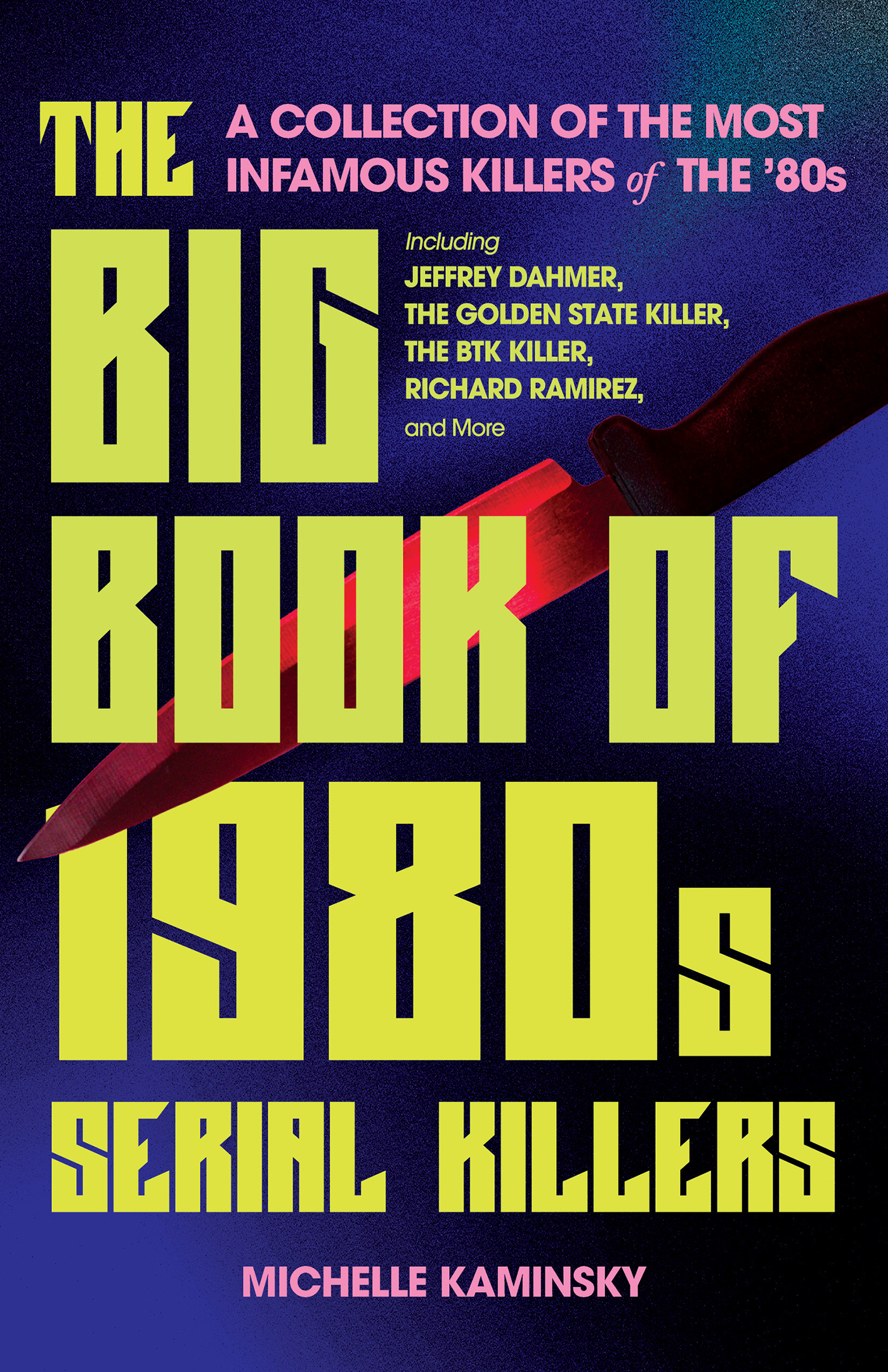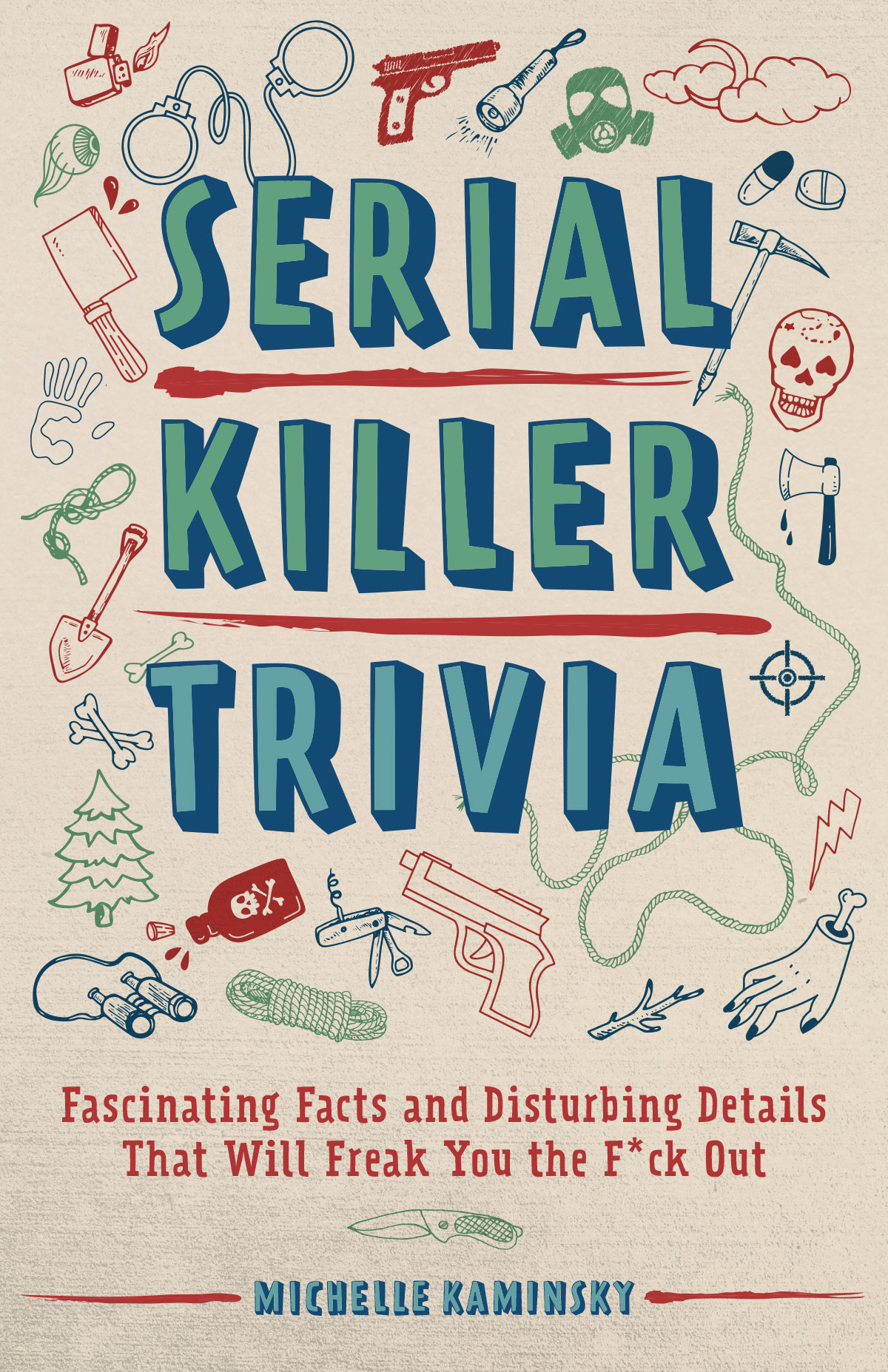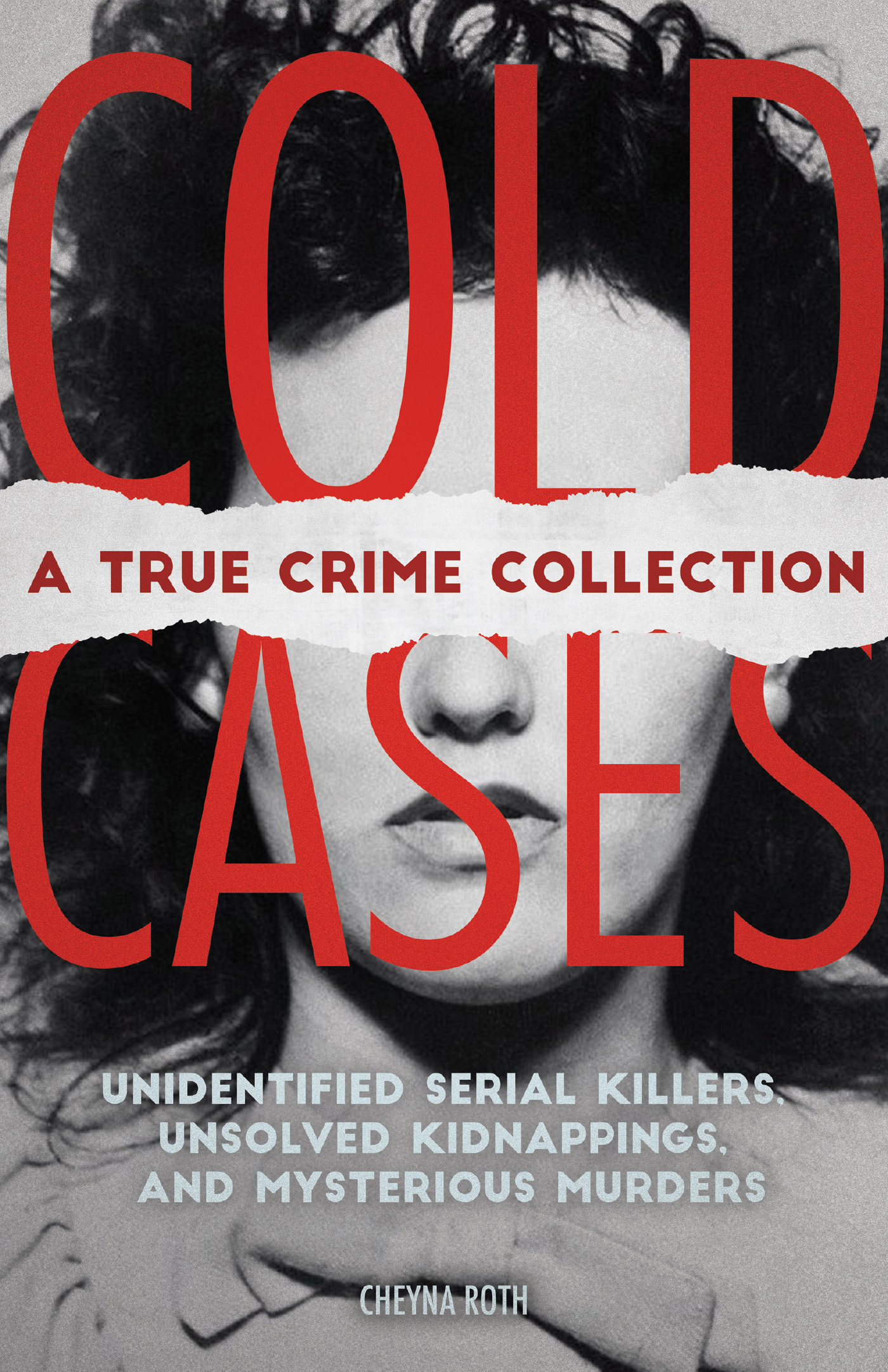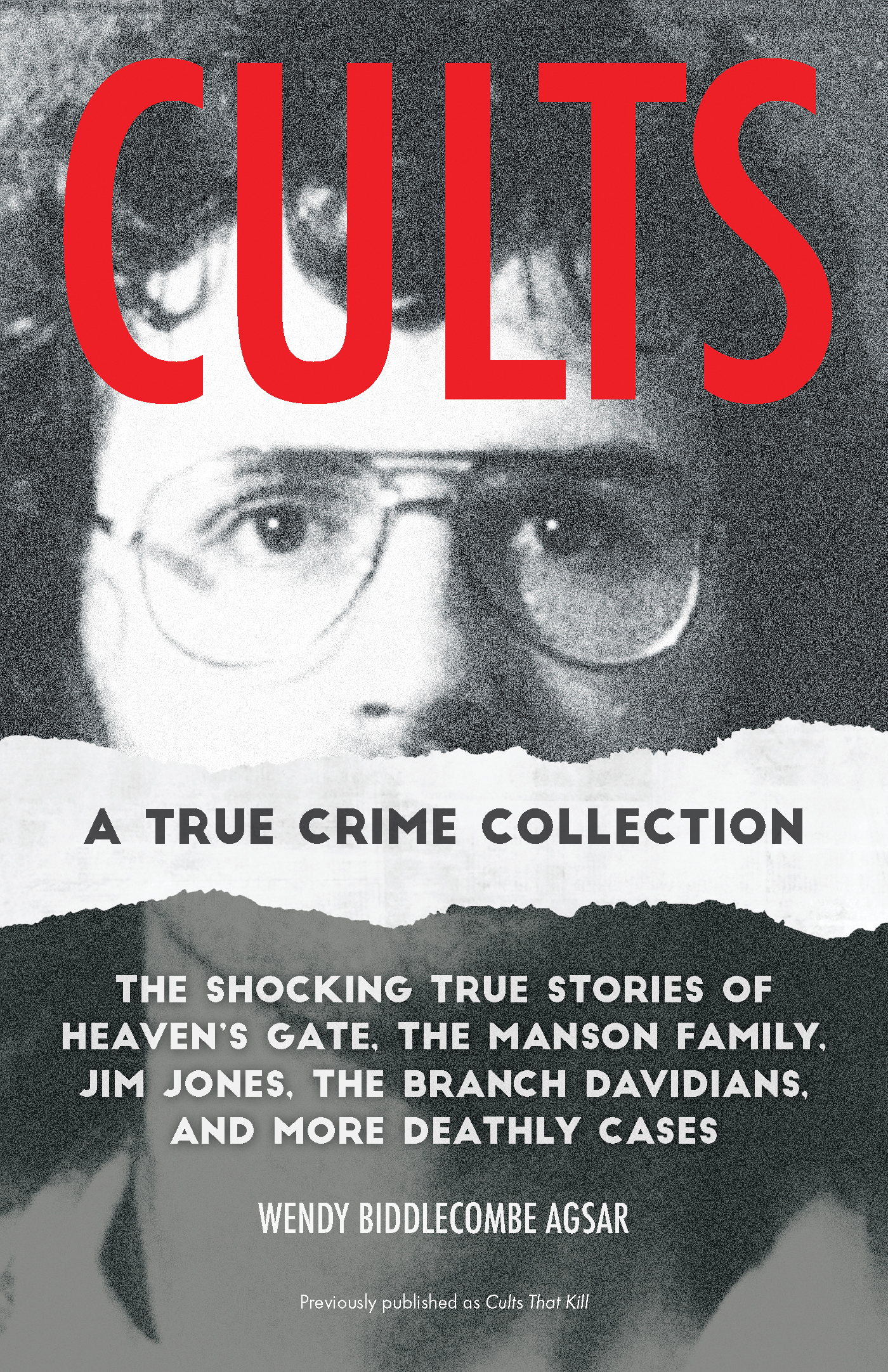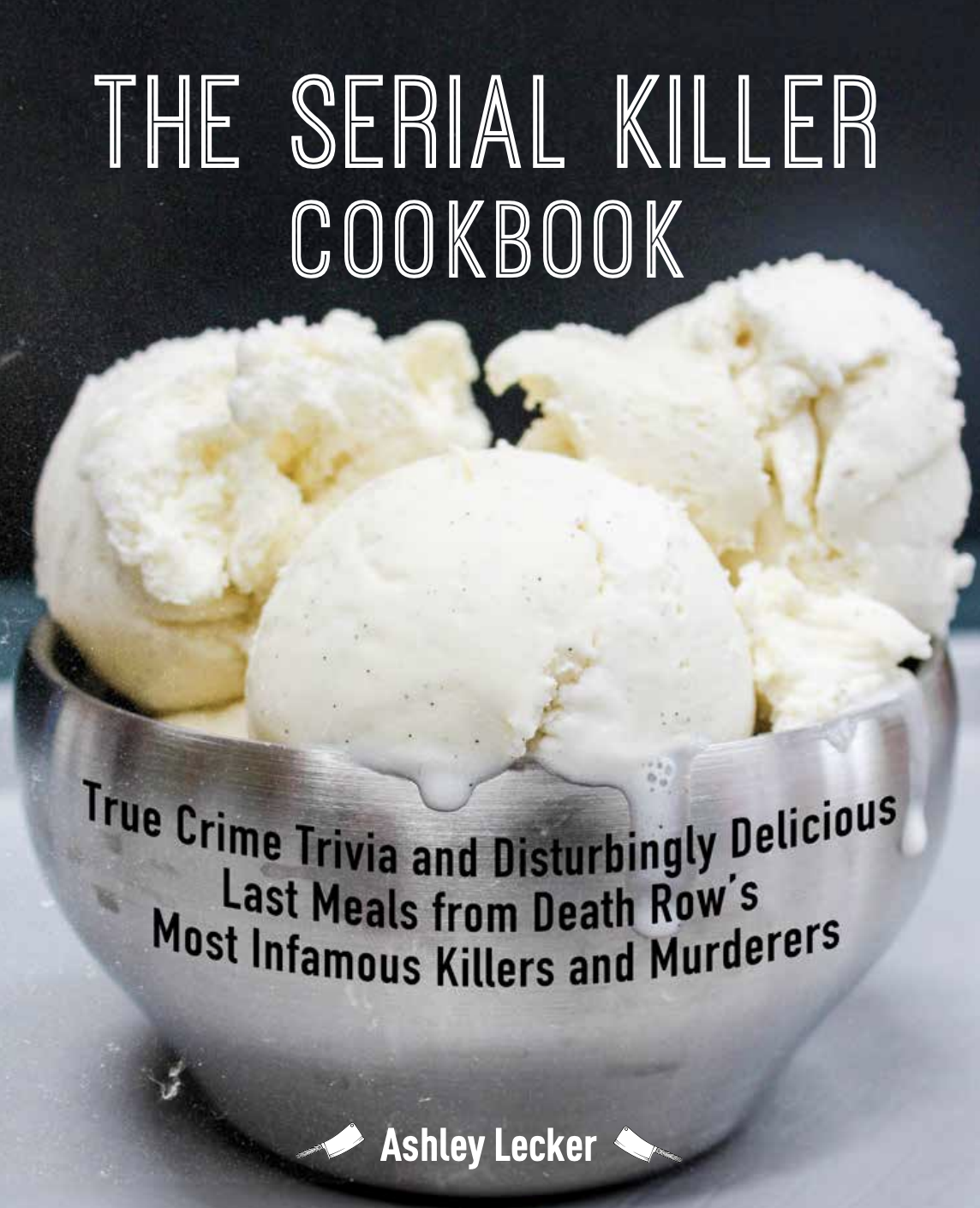
Serial Killers of the 80s
- Book Sample /
- True Crime
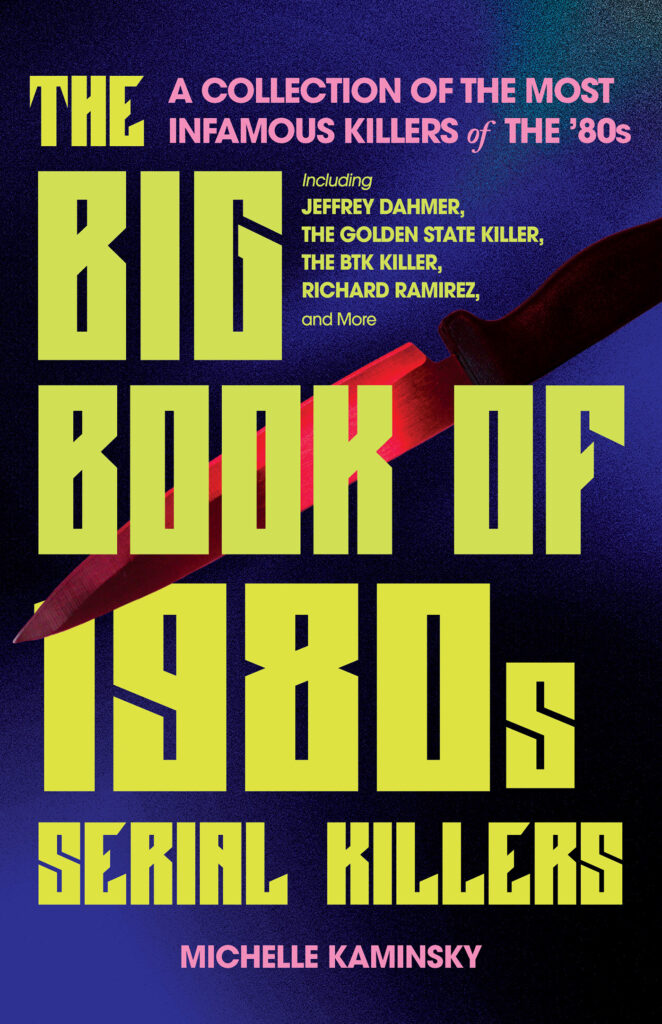 Take a deep dive into the rise and fall of some of the most notorious serial killers of the 80s, including Jeffrey Dahmer, Joseph James DeAngelo, Dennis Lynn Rader, and the Night Stalker.
Take a deep dive into the rise and fall of some of the most notorious serial killers of the 80s, including Jeffrey Dahmer, Joseph James DeAngelo, Dennis Lynn Rader, and the Night Stalker.
Neon leg warmers, big hair, rock band T-shirts, and mix tapes — 1980s’ nostalgia at its finest. But just below that saccharine facade lurked a seedy underbelly of inconceivable human monsters like no decade before had ever seen. The Golden Age of the Serial Killer brought a sharp increase in violent crime, panic, and terror, which in turn sparked a chaotic race between serial murderers and law enforcement officers tasked with both stopping the killings and delivering justice to victims and their loved ones. The Big Book of 1980s Serial Killers is for the true crime fanatic who wants to investigate these cases and discover the ins and outs of how crimes like these are solved.
Drawing from meticulous research, contemporary journalistic accounts, and trial transcripts, this book traces the various ways in which law enforcement cracked some of the most challenging serial killer cases in history. Serial killers included:
- Doug Clark and Carol Bundy (Sunset Strip Killers)
- Jeffrey Dahmer
- Joseph James DeAngelo (The Golden State Killer)
- Larry Eyler (The Interstate Killer)
- Lonnie David Franklin, Jr. (The Grim Sleeper)
- Samuel Little
- Gary Leon Ridgway (The Green River Killer)
- Dennis Rader (The BTK Killer)
- Richard Ramirez (The Night Stalker)
- Tommy Lynn Sells
- Arthur Shawcross (The Genesee River Killer)
- Aileen Wournos
Are you ready to hunt the worst serial killers of the 80s?
* * *
Serial Killers of the 80s: Why Were There So Many?
From Jeffrey Dahmer and the Golden State Killer to Richard Ramirez and BTK, serial killers seemed to populate the 1980s like no other decade—and that statement isn’t one of those “When I was young” remarks that end with telling kids to get off your lawn.
The data, unfortunately, backs it up.
The 1980s capped the height of a three-decade surge in serial murders, which then began a steady decline through the 1990s and the first two decades of the 2000s.
Radford University psychology professor Dr. Mike Aamodt has been compiling and analyzing serial killer statistics for decades. His information shows that a staggering nearly 770 serial killers were operating throughout the United States between 1980 and 1989. More conservative estimates put the number at closer to 300; differences in the definition of a serial killer (number of murders, time frame, etc.) can result in raw number discrepancies, but a sharp increase in serial murders in the 1980s is evident using any metric.
Victimhood statistics follow a similar trajectory. The worst year for victims, according to Aamodt’s data, was 1987, when 389 people were murdered by serial killers. From there, the number of victims per year began dropping, and by 2011 serial killers claimed the lives of under 100 people in the United States annually. That number may grow if remains are found of other missing individuals and linked to serial killers, but the trend is moving in a positive direction.
Investigative advancements likely increased the number of identified serial killers in the 1980s. More sophisticated methods of evidence and data collection along with better information sharing processes allowed law enforcement to link murders to the same perpetrators, especially across jurisdictions, in ways that hadn’t been possible even a decade before.
Meanwhile, in the decade of decadence, big hair, and neon everything, a sharp overall increase in violent crime coincided with a prevailing atmosphere of panic and terror—all occurring within a unique time in American societal history.
While there are many things from the 1980s to be nostalgic about, serial killers and the circumstances that aided their proliferation are not among them.
Life in the 1980s
The 1980s saw a restitching of the country’s social fabric, and several of those moving threads placed some individuals directly in harm’s way and exponentially increased their odds of falling prey to serial killers. Many of these same phenomena also helped serial killers escape capture.
- Sex Work
- Cocaine Epidemic
- Women’s Movement
- HIV/AIDS Epidemic
- Runaways, Hitchhiking, and Partying
- Racial Tensions
- People Moving Farther From Home
- Stranger Danger and Satanic Panic
Catching 1980s Serial Killers
Taken all together, when a serial killer was on the loose these cultural factors created a tense, terrifying atmosphere that sparked a chaotic, dramatic race between killer and law enforcement, who were tasked with both stopping the killings and delivering justice to victims and their loved ones.
Who would win?
Law enforcement ultimately did prevail against many of the deadliest and most horrific serial killers of the 1980s. All of those featured in this book were eventually brought to justice, even if, in some cases such as BTK, the Grim Sleeper, and the Golden State Killer, that justice took decades, requiring advanced DNA testing and new investigative techniques such as genetic genealogy to finally enable investigators to catch up with the scant clues left behind by the murderers.
Some of those advances and techniques may be why the number of serial killers has dropped and why, as Dr. Harold Schechter, serial killer expert and professor emeritus at Queens College, told Slate in 2011, “The golden age of serial murderers is probably past.”
Drawing from meticulous research, contemporary journalistic accounts, police reports, court opinions, and other primary source materials, The Big Book of 1980s Serial Killers looks back on ten of the most challenging and fascinating serial killer cases in history, placing them in the unique historical and social context of that most peculiar decade: the 1980s.
* * *
Can’t get enough true crime? Check out The Big Book of 1980s Serial Killersbelow, as well as our other fascinating (and freaky) serial killer content.
Photo by Octavian Dan on Unsplash
The Big Book of 1980s Serial Killers
Take a deep dive into the rise and fall of some of the most notorious serial killers of the ‘80s, including Jeffrey Dahmer, Joseph James DeAngelo, Dennis Lynn Rader, and the Night Stalker. Neon leg warmers, big hair, rock band T-shirts, and mix tapes — 1980s’ nostalgia at its finest. But just below that saccharine facade lurked a
Learn more